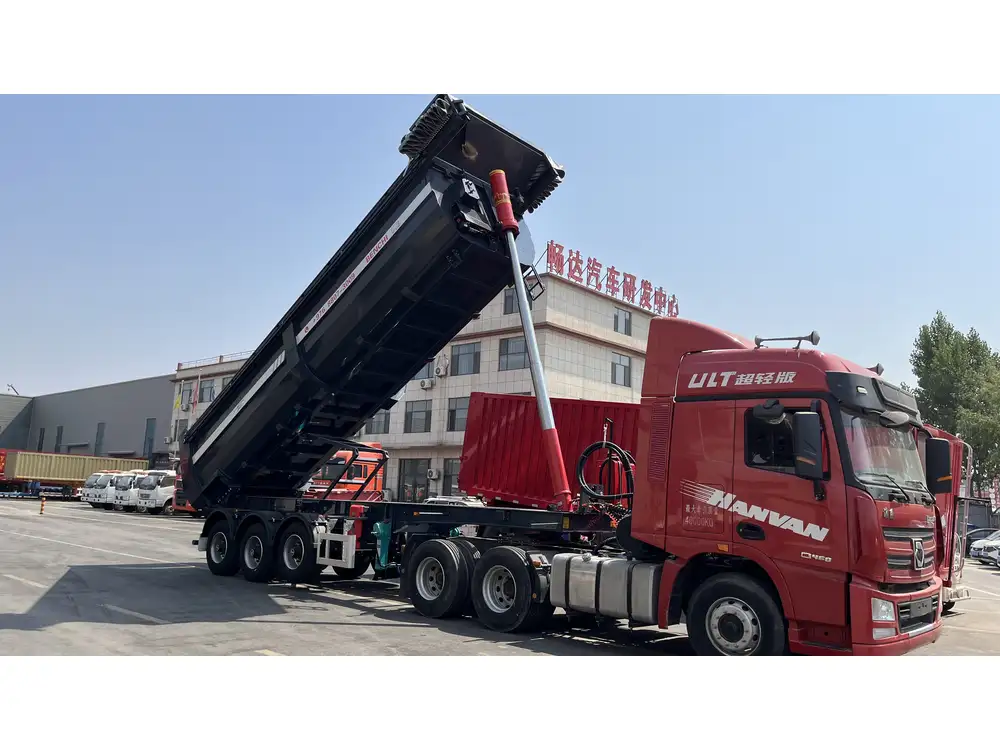Introduction to Tire Pressure in Semi-Trailers
The tire pressure in semi-trailers is not just a matter of convenience; it’s a critical aspect that affects overall performance, safety, and efficiency. The right amount of pressure can enhance fuel economy, ensure better handling, and extend the lifespan of both tires and the vehicle. Conversely, improper tire pressure can lead to disastrous consequences, including blowouts, uneven tire wear, and accidents.
Why Is Tire Pressure Important?
Proper tire pressure is paramount for several reasons:
- Safety: Under-inflated tires can overheat, leading to blowouts. Over-inflated tires reduce contact with the road, compromising traction.
- Fuel Efficiency: The correct pressure minimizes rolling resistance, resulting in lower fuel consumption.
- Longevity: Maintaining optimal tire pressure prolongs the life of the tires, saving costs on replacements.
- Load Management: Different loads require different pressures to ensure safety and handling.

Determining the Right Tire Pressure
Manufacturer Recommendations
The first step in determining the proper tire pressure for a semi-trailer is to consult the manufacturer’s recommendations. These guidelines are typically found on a placard located inside the driver’s side door, or in the owner’s manual.
- Standard Pressure: Most semi-trailer tires have a standard pressure ranging from 80 to 110 PSI, depending on the type of tire and the load.
- Check Load Index: Each tire has a load index that corresponds to the maximum weight it can support at a given pressure. Always refer to this index when loading cargo.
Factors Influencing Tire Pressure
Several environmental and operational factors can influence the optimal tire pressure:
| Factor | Impact on Tire Pressure |
|---|---|
| Load Variability | Increased load requires higher pressure. |
| Temperature Changes | Tires naturally expand in heat; pressure checks are essential during temperature fluctuations. |
| Mileage | Regular wear and tear can affect how tires hold air. |
| Tire Type | Different tires (e.g., radial vs. bias) may have different requirements. |

Measuring Tire Pressure: Best Practices
To ensure accurate readings, consider these practices:
- Use a Reliable Gauge: Digital gauges are recommended for their precision.
- Check When Tires Are Cold: Tire pressure should be measured when the tires are cold, ideally after the vehicle has been parked for several hours.
- Ensure Valve Integrity: Inspect valve stems for any damages or leaks before measuring.
Common Mistakes in Tire Pressure Maintenance
Over-inflation vs. Under-inflation
Both over-inflation and under-inflation can lead to significant issues. Here is a detailed look at the consequences of each.
| Condition | Consequences |
|---|---|
| Under-Inflation | – Decreased fuel efficiency – Increased tread wear on outer edges – Higher risk of blowouts |
| Over-Inflation | – Reduced contact with the road – Increased center tread wear – Decreased traction and handling |

Neglecting Regular Checks
Ignoring regular tire pressure checks can lead to unexpected failures. Regularly scheduled inspections should be carried out according to the following intervals:
| Interval | Action Required |
|---|---|
| Daily | Check pressure before each trip. |
| Weekly | Inspect for signs of wear or damage. |
| Monthly | Perform a detailed review of all tires. |
The Role of Technology in Monitoring Tire Pressure
Modern semi-trailer manufacturers often integrate advanced tire pressure monitoring systems (TPMS). These systems provide real-time insights and alerts regarding tire pressure, helping fleet operators manage tire health proactively.
Advantages of TPMS
- Real-Time Alerts: Instant notifications for any deviations from the optimal pressure.
- Data Logging: Tracks pressure data over time to identify trends and potential issues.
- Enhanced Safety: Reduces the risk of tire-related accidents.

Addressing Common Tire Pressure-Related Questions
What Happens If I Drive With Low Tire Pressure?
Driving on under-inflated tires can severely compromise safety. It increases the risk of blowouts and results in reduced maneuverability. Moreover, it causes uneven tire wear, leading to premature tire replacements.
How Much Pressure Should I Utilize While Carrying Specific Loads?
The general rule of thumb is to increase the tire pressure in accordance with the weight loaded onto the trailer. Here’s a simple guide:
- Light Load (up to 25% of capacity): Maintain standard pressure.
- Moderate Load (25% to 75%): Increase pressure by 5-10 PSI.
- Heavy Load (over 75%): Adjust pressure by 10-15 PSI, ensuring a balance between load capacity and safety.

How Does Temperature Affect Tire Pressure?
Tire pressure fluctuates with temperature changes. For every 10°F temperature increase, tire pressure can increase by 1 PSI. It’s essential to adjust pressure accordingly to maintain optimal performance.
Conclusion: A Comprehensive Approach to Tire Pressure Management
In conclusion, managing the tire pressure of semi-trailers is crucial for ensuring safety, maximizing efficiency, and minimizing operational costs. By following manufacturer guidelines, regularly checking pressure, and utilizing advanced monitoring systems, operators can optimize performance and prolong tire life.
Actionable Steps
- Regular Inspections: Implement both pre-trip and regular inspections.
- Adjust As Needed: Train operators to adjust tire pressure based on load and environmental conditions.
- Invest in Technology: Consider leveraging TPMS for enhanced monitoring capabilities.
By focusing on these best practices, you can ensure that your semi-trailer tires perform optimally, safeguarding not only the cargo but also the safety of those who share the road. Keeping your tires in peak condition not only facilitates better driving experiences but also contributes to a more sustainable operational approach. Optimize your semi-trailer’s performance today by ensuring proper tire pressure management—your journey begins with the ground beneath your wheels.



